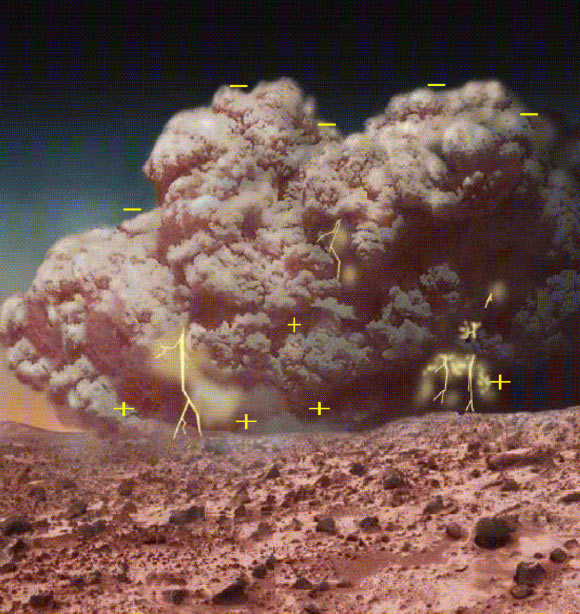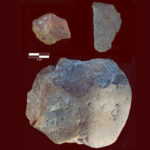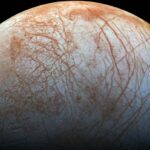Frictional electrification is a common process in the Solar System, with Martian dust activities known to be a powerful source of electrical charge buildup. Furthermore, the thin atmosphere on the Red Planet makes the breakdown of accumulated electrical fields, in form of electrostatic discharge, much easier to occur — a hundred times easier than on Earth. Electrostatic discharge generates a huge amount of energetic electrons that collide with Martian atmospheric molecules and generate free radicals. These free radicals react with the Martian chlorides to generate new species. In new research, planetary scientists found the yields of (per)chlorates, carbonates, and chlorine from the electrostatic discharge process, with the strength matching mid-strength Martian dust activity, are at per thousand or percent levels. Their findings suggest that Martian atmosphere-surface interaction in dust events is a major driving force for the global chlorine-cycle on Mars.
This artist’s concept illustrates a Martian dust storm, which might also crackle with electricity. Image credit: NASA.
“Electrical discharge on Mars probably looks more like a faint glow,” said Professor Alian Wang, a planetary scientist at Washington University in St. Louis.
“It could be somewhat like the aurora in polar regions on Earth, where energetic electrons collide with dilute atmospheric species.”
Planetary scientists consider chlorine one of five elements that are mobile on Mars; the others are hydrogen, oxygen, carbon and sulfur.
This means chlorine, in different forms, moves back and forth between the surface and the atmosphere on Mars.
On the ground, chloride deposits are widespread; they likely formed in the early history of Mars as precipitated chloride salts from brine.
In their new study, Professor Wang and colleagues show that one particularly efficient way to move chlorine from the ground to the air on Mars is by way of reactions set off by electrical discharge generated in Martian dust activities.
The authors conducted a series of experiments that obtained high yields of chlorine gasses from common chlorides — all by zapping the solid salts with electrical discharge under Mars-like conditions.
“The high-releasing rate of chlorine from common chlorides revealed by this study indicates a promising pathway to convert surface chlorides to the gas phases that we now see in the atmosphere,” said Dr. Kevin Olsen, a researcher at the Open University.
“These findings offer support that Martian dust activities can drive a global chlorine cycle.”
“With the ExoMars Trace Gas Orbiter, we see repeated seasonal activity that coincides with global and regional dust storms.”
“The reaction rates are huge. Importantly, the released chlorine in a short-time mid-strength electrostatic discharge process is at a percent level,” Professor Wang said.
“This means that during a seven-hour simulated electrostatic discharge experiment, at least one out of every 100 chloride molecules is decomposed and then releases its chlorine atom into the atmosphere.”
“Similar but slightly lower, the formation rates of carbonates and perchlorates are at sub-percent and per-thousand levels.”
These high yields lead the team to believe that Martian dust activities can be linked to three global phenomena recently revealed by Mars missions.
“Electrical discharge can be tied to the extremely high concentrations of perchlorate and carbonate globally in Martian topsoil,” Professor Wang said.
“Quantitatively, the high end of the observed concentration ranges can be accumulated by dust storm-induced electrical discharge within less than half of the Amazonian period, the most recent period of Mars’ history, which is thought to have begun about 3 billion years ago.”
“Also, the high yield of released chlorine atoms from chlorides can account for the high concentrations of hydrogen chloride observed in the Martian atmosphere during the 2018 and 2019 dust seasons, when assuming 1 to 10 cm thickness of Martian surface dust would be kicked up by a global dust storm.”
“No other process that we know of can do this, especially with such quantitatively high yield of chlorine release.”
The study was published in the journal Geophysical Research Letters.
_____
Alian Wang et al. 2023. Quantification of Carbonates, Oxychlorines, and Chlorine Generated by Heterogeneous Electrochemistry Induced by Martian Dust Activity. Geophysical Research Letters 50 (4): e2022GL102127; doi: 10.1029/2022GL102127




